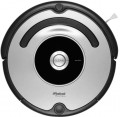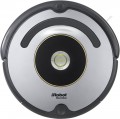Suction power
The suction power provided by the vacuum cleaner. For models with power adjustment (see below), in this case, the maximum value is taken into account. Note that "suction power" is sometimes erroneously also called the suction force, indicated in pascals; see below for more details.
Suction power is a key indicator that determines the capabilities of the unit: the higher it is, the more efficiently the vacuum cleaner can draw in various contaminants, and the better it handles with carpets, fabrics and other materials into which dust can penetrate deeply. On the other hand, high power inevitably affects the weight, power consumption, dimensions and price of the device. Therefore, it does not always make sense to chase the maximum values — you need to take into account the real working conditions and the general purpose of the vacuum cleaner.
The specific numbers found in this paragraph largely depend on the type of device. For example, in handheld household models, suction power
does not exceed 100 W,
and for conventional household units, an indicator of 100 – 150 W is still considered very limited. At the same time, we note that the minimum required for a full-fledged dry cleaning of smooth floors is considered to be
300 – 350 W,
for carpet and other short pile coatings — 350 – 400 W, and for long pile materials and upholstered furniture
higher rates are desirable. Vacuum cleaners with lower suction power values are intended not so much for periodic cleaning, but for constant (ideally daily) maintenance of cleanliness in an already tidy room.
As for the relationship between suction power and suction force, it is as follows: power is the suction force (thrust) multiplied by the airflow (performance). Without going into too much detail, we can say that the efficiency of the vacuum cleaner is determined by both of these indicators. And it is worth evaluating this efficiency by suction power (regardless of the specific relationship between traction and performance).
Fine filter
The presence of a
HEPA fine filter in the vacuum cleaner; also in this paragraph, the specific class of this filter is often specified.
HEPA (High Efficiency Particulate Absorbing) filters are designed to purify the air from the smallest mechanical contaminants — up to tenths of a micron in size. It allows you to trap not only fine dust but even bacteria. For comparison: the size of most bacteria starts at 0.5 microns, and the effectiveness of HEPA filters is evaluated by the ability to retain particles with a size of 0.1 – 0.3 microns. The most advanced such filters (
class 13 and above) are able to remove more than 99.9% of these particles from the air. Here is a more detailed description of the different classes:
— HEPA 10 – traps at least 85% of particles with a size of 0.1 – 0.3 microns;
— HEPA 11 – at least 95% of such particles;
— HEPA 12 – not less than 99.5%;
— HEPA 13 – not less than 99.95%;
— HEPA 14 – not less than 99.995%;
Note that pollution with a size of 0.1 – 0.3 microns is the worst-kept by HEPA filters, so with particles of other sizes (both larger and smaller), the efficiency of such elements will be even higher.
Regarding the choice for this parameter, it is worth noting that, in fact, it does not always make sense to pursue a high filtration class. For example, during wet cleaning with a washing vacuum cleaner (see abov
...e), the HEPA filter, in fact, is not needed at all (in many models, it is recommended to remove it altogether for such cases). So if you plan to use such a vacuum cleaner mainly for washing, you can ignore this parameter. Another specific case is industrial units (see "Type"): they are often used for rough cleaning of large debris, where thorough air filtration is not required.Cleaning area limit
A method for limiting the processed space provided in a robot vacuum cleaner.
Another name for this feature is
"virtual wall". Its general meaning is quite obvious: a “wall” (or several walls) allows you to limit the movement of the robot on the surface to be cleaned. It can be useful if cleaning needs to be done in a room without a door. Or if part of the floor is occupied by small items that do not need to be cleaned (for example, pieces of a puzzle being assembled). But the specific possibilities of such a restriction are directly related to how it is implemented. Note that the function is found mainly in middle-class robot vacuum cleaners and top models. Budget robotic "cleaners" often do not have the function of limiting the zones of the processed space - they do not have one.
Here are the main options found in modern robots:
— Laser sensor. A fairly popular option due to its simplicity, low cost, as well as simplicity and ease of use in fact. Usually, when installing the laser limiter, it is enough to put it on the floor and point it in the right direction. On the other hand, such devices are not well suited for creating complex borders. The classic format of the laser limiter is linear: a doorway or room is blocked by a direct beam, which is perceived by the robot as the boundary of the treated area. In addition, some models may also provide a circular mode, when the sensor forms a "forbidden zone" in
...the form of a circle or sector of a certain diameter. This format of work allows to fence off the corners of rooms and small areas near the walls (a typical example is the location of a dog or cat bowl in the kitchen). If you need to create a border of a different, more specific shape, this will require several sensors at best (even though one limiter is usually supplied in the kit if supplied at all); and in the worst case, it will be completely impossible. It is also worth considering that the range of the laser in linear mode is usually limited to 3 – 4 metres; this is most often sufficient for residential premises and small offices. However, it may not be enough for a large space. And the emitters are usually powered by batteries or accumulators, the charge of which is limited.
— Magnetic tape. Limiter in the form of a tape made of magnetic material laid on the floor. Such a tape is spotted by a special sensor and is perceived by the robot as a border that cannot be crossed. For secure fixation, it is usually made self-adhesive, and the intensity of the magnetic field in most cases ensures effective operation through carpets and other similar coverings. One of the key advantages of such restraints is that almost any shape of the restricted zone can be formed from the sections of tape: the length of individual sections can be chosen at your discretion, and the maximum total length is limited only by the stock of tape at hand. In addition, this type of limiter does not require power. The disadvantages of this option include the complexity of laying in some conditions (for example, under a continuous carpet covering). In addition, at best, a very small amount of tape is included in the package; and many vacuum cleaners are not equipped with it at all, so you need to buy a magnetic tape additionally.
— Via the application. The most advanced way to limit cleaning: the boundaries of the working area are set on a smartphone or other gadget through an application that is also used for general control of the robot. Almost all models with this function also have the function of building a map of the premises (see below) — the finished map is displayed in the application, and on it the user can set the boundaries of the working area at will. The simplest version of such borders is separate straight lines. However, control applications often provide more extensive features: broken lines and polygons from individual segments, standard shapes (circle, oval, rectangle) and even the ability to draw a border by hand. Anyway, this method of restriction is extremely convenient and functional. However, robot vacuum cleaners with this capability are expensive, mainly due to the presence of a complex mapping system.Battery capacity
The capacity of the battery installed in the vacuum cleaner.
Recall that batteries are used in all robots, as well as other types of vacuum cleaners for which mobility is important; see "Power supply" for details. As for battery capacity, theoretically, a larger battery allows you to work longer without recharging. However, there are nuances. Firstly, the actual battery life of the unit will also depend on its type, power and some features of the functionality. Secondly, the actual battery capacity is determined not only by this indicator but also by the voltage in volts. So if these batteries differ in voltage, you need to convert their capacity into watt-hours and use this data when comparing. These calculations are described in more detail in special sources.
In light of all this, only vacuum cleaners with similar specifications can be directly compared in terms of battery capacity. And it is best to evaluate the actual battery life by the directly claimed operating time.
Cleaning area
Cleaning area for which the robot vacuum cleaner is designed.
It is the maximum size of the room that the device can effectively process without the need to empty the dust container or charge the battery. It is worth choosing according to this parameter with a certain margin — this will give an additional guarantee in case of various emergencies. On the other hand, you should not take too much stock: after all, a large cleaning area requires more capacious batteries and capacious dust collectors, which significantly affects the dimensions, weight, and most importantly, the price of the vacuum cleaner.
As for specific figures, the most modest models nowadays are designed for 45 – 60 m2 — this corresponds to an average apartment with 1 – 2 rooms. And in the most advanced and heavy devices of this type, the cleaning area can be 300 m2 or even more.

